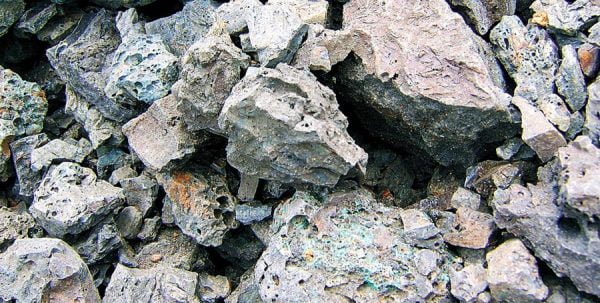Value addition vital for mining goals

The ban on exports of chrome ore and the advent of a company ready to cut and polish diamonds in Zimbabwe are signs that Zimbabwe is now accelerating out of the rut of being a mineral exporter that just ships stones and gravel, rather than the actual raw materials our customer needs.
When you export raw ore, transport costs are a lot higher, since there is a lot of sand on that shipment, and someone else somewhere else makes the money turning those wagon loads of gravel into bars of metal that steel companies and other users of chrome actually
need.
So Zimbabwe, and miners, lose. For a start the price miners get has to be lower since it costs so much to ship high-bulk low-value products to a port. Countries that make money shipping ores, like Australia does with iron ore, generally mine the stuff a few kilometres from a decent port where large bulk carriers can dock and load. Once you put in long train or truck journeys that cost has to come off the producer price.
Secondly, Zimbabwe loses quite a decent percentage of the potential export earnings since someone else is smelting that ore, creating their own jobs somewhere else, and besides recovering the costs of that operation will also add on their mark-up. And since it is
almost impossible to operate any industry tax-free anywhere in the world, some other finance minister is collecting the taxes on smelter profits.
The ban on exports of chrome ore is not new. All chrome exports used to have to be in the form of bars of ferrochrome. Ore exports then were allowed. In the general meltdown of our heavy industry smelters closed, and certainly new ones were not being commissioned to cope with any production increase. There was a surge in small-scale mining and a general feeling that these miners should have a market.
With the changes in the investment climate under the Second Republic, nine companies, and these include locally-owned companies, are now running between them 22 ferrochrome smelters. And they also have the electricity supplies to run those smelters. So
after a gap of a good few years we can return to exporting metal, not gravel.
Some producers had tried to cope with the collapse of the smelter industry by exporting chrome concentrates, at least a half-way stage. These have been given a little leeway to switch over to pure metal over the next 11 months. They will need to make arrangements with a smelter company to do the final processing.
Fortunately there is no monopoly, with nine companies now running smelters. This should ensure competitive pricing for contract smelting when miners without a smelter need to convert their ores or concentrates to ferrochrome. But no doubt the authorities can also keep an eye on the industry and make sure no cartels form in quiet little on-line chats.
We need to keep those small-scale miners operating and make sure they get proper payment for their ores, which should now be a bit higher since the transport costs will come down and miners should get their fair share of that saving.
Another major decision by Cabinet this week was to allow a new investor, Ashelroi trading and Services, to buy rough diamonds on the Zimbabwean diamond auctions. Ashelroi wants to set up a diamond cutting and polishing concern in Zimbabwe and transfer the
skills and technology required.
Obviously the company has now been checked out, since Zimbabwe needs to be very careful over how it markets its diamonds considering the troubles we have experienced, some because of rife smuggling and some because there are groups who want to hammer us on the basis of fake news reports.
We have now put in the proper regulation for our diamond mining, eliminated the smuggling and stopped the cowboy operations on the edge of the industry. The next stage was obviously moving up the value chain and converting the gem-quality diamonds to cut
gems, so once again we can get full value from this resource.
Zimbabwe is a major mineral exporter, supplying raw materials for a lot of industrialists around the world, and we want to push our mining production to US$12 billion a year by 2023.
Some of that will come from opening new mines and expanding existing mines, but a lot has to come from getting full value from what we already mine and hope to mine.
And that in turn means we need to export processed minerals, not ores and not even the concentrates. Platinum group metals is one area where one of our major exports now needs an upgrade. Already we export concentrates, but the final smelting and separating of
the range of metals is done in South Africa and that is quite a lot value that is added there.
But with the expansion on the mining side, with the third giant mine now being dug, we are moving rapidly towards the stage when the miners can viably commission a refinery in Zimbabwe. This might well need to be shared, at least at the beginning, but with the stable and open investment climate the day when the final refinery is a decent business proposition must be close.
The Government is willing to do its part. Not only has the investment side been sorted out, and power supplies fixed with major new investment at Hwange Thermal to ensure they stay fixed, but the chrome decision shows that investors will not be short changed. One
reason for the ore export ban was to ensure that those who had invested in chrome smelters would get the business and would not be sitting there with a half-used plant while some miner did something to provide work for a foreign smelter, perhaps owned by a
colleague or the same group of shareholders.
Obviously if the smelter investors cannot cope, or they play fast and loose with the rules,nthen ore exports can resume, and the Government has mentioned that as a possibility if the
smelters fail to cope.
We are not being doctrinaire but very practical in our approach to ensuring that miners, the country and the investors into processing plants all get a fair deal.


